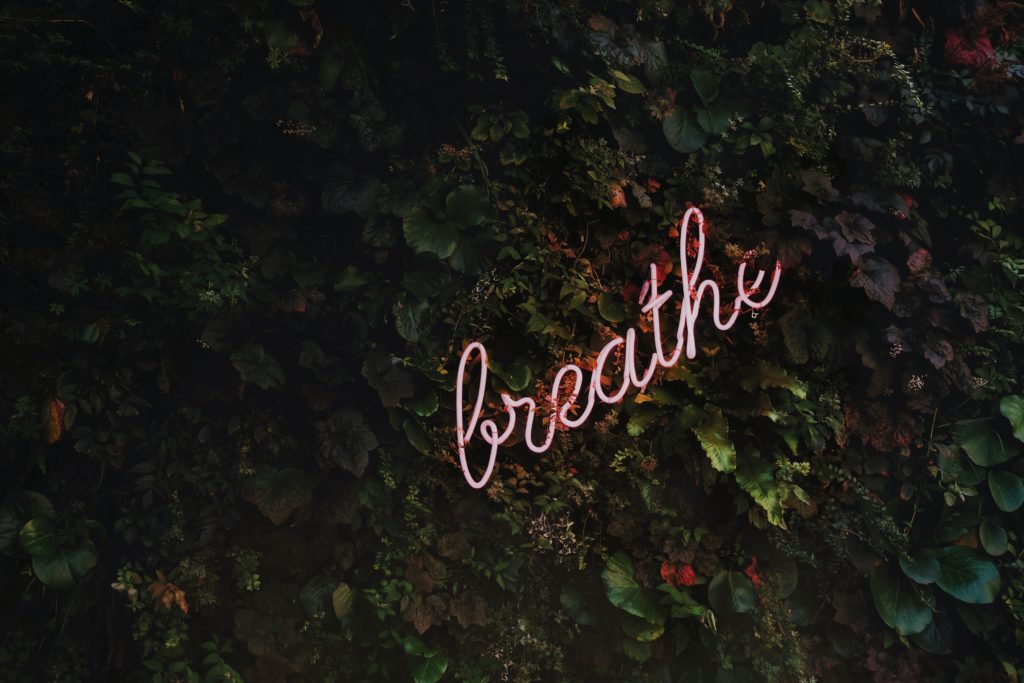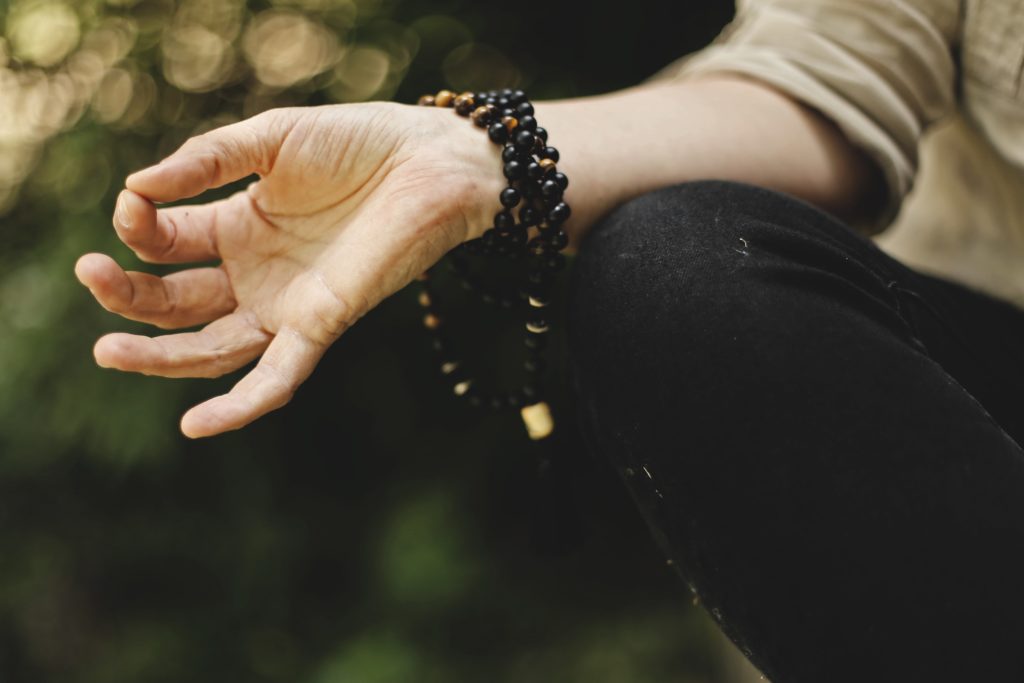Reduce Stress By Practicing Mindfulness

Brigitte

Reduce Stress With These Mindfulness Techniques
I don’t know about you,but I’m getting drained by all the bad news concerning the corona virus. It’s vital that we stay informed and follow the the necessary guidelines to ensure that we and our families stay safe. But, lately I’ve been finding myself having to “check-in” on my internal and exterenal world more often to stay grounded. This is what is best known as mindfulness. This is a habit of focusing on being present versus mulling over your past or being put on edge about your future. It’s something I use to do well as a child, and kind of lost it along the way as I got caught up in adulthood. But, now can’t go without it because it helps me stay sane.
What comes to mind when someone recommends that you practice mindfulness?
Maybe you think of meditation.
Maybe you think of yoga.
Maybe you think of long stretches of awkward silence.
Maybe you think of essential oils and/or incense.
Or, maybe you think of a deep spiritual practice that requires intense study before it actually works.
Mindfulness has been shown to have a range of benefits and can improve your physical, mental and emotional health. Whether you want to practice mindfulness to help you deal better with stress or to help you live a more positive life, you’re likely to have lots of questions.
"The mind is everything. What you think you become."
Buddha Tweet
Want More Self Care Tips?
Here are some answers to the most common questions people have about mindfulness.
1. How do I do it?
The short answer is that you can practice mindfulness and meditation in the way that suits you best. Some people enjoy traditional meditation, sitting in silence on a cushion. Other people use guided meditations on their smartphones or computers. It’s important to integrate mindfulness into your everyday activities, taking the time be genuinely aware of the present moment. You can even practice mindful walking. The best way to practice mindfulness is the way that feels right to you.
2. How do I breathe properly?
You may feel like you should force your breath into some pattern or control it in some way, such as trying to slow it down. But that’s not necessary. It’s best just to feel and experience your breath. As you begin to relax, your breathing will naturally slow down and regulate on its own. Try not to judge yourself for not doing it ‘right.’ Don’t try to control or channel your breath, just keep observing and allowing. Simply let the breath breathe you.

3. How do I stop my mind from wandering?
If you find a way, let me know! It’s natural for your mind to wander or be distracted. Our mind thinks. That’s just what it does. Even highly-experienced mindfulness practitioners have wandering minds! Everyone does!
Most of us spend our days worrying about the future or brooding over the past. We don’t often stay in the present, but it is the way to inner peace and calm. Be kind to yourself and don’t judge your mind for falling back into familiar patterns of thinking. Bring your attention back to the present and use your breath to keep bringing your attention back to focus on the here and now.
4. How do I find the time for mindfulness?
This one’s easy! You don’t have to set aside special time to bring mindfulness into your life. In fact, you can enhance your formal meditation time by integrating mindfulness practice wherever you are. You can use these prompts throughout the day to return your attention to the present moment and take some deep conscious breaths:
- In the shower
- During your daily commute
- Waiting in line, or for an elevator, or for a meeting to start
- Before you start your car
- While you’re booting up your computer or opening your inbox
- While you’re waiting for your coffee
- Before answering the phone
Take advantage of all these ‘lost moments’ in your day to turn them into mindful moments!
While mindfulness can include meditation, the use of oils and incense, and even be studied by those who want to be certified practitioners and teachers – it can also be a way of seeing the world and how you fit in it. Being mindful is something anyone can do.
 And yet, many people believe that being mindful, or living a mindful life, is difficult. They’re caught up in living by habit. In the day-to-day routines of work and family and friends until they’re doing things only because they’re supposed to be doing them. They’re not giving much thought to why they’re working at that job, or why they’re frustrated with their relationships with family and friends. They’ve gotten used to the way things are and don’t think to make a change.
And yet, many people believe that being mindful, or living a mindful life, is difficult. They’re caught up in living by habit. In the day-to-day routines of work and family and friends until they’re doing things only because they’re supposed to be doing them. They’re not giving much thought to why they’re working at that job, or why they’re frustrated with their relationships with family and friends. They’ve gotten used to the way things are and don’t think to make a change.
This hectic, constant activity without real thought or meaning can cause a lot of stress. Those who suffer from persistent anxiety throughout the day, a sense of being rushed but not quite knowing why, headaches, and more tend to ignore the symptoms of stress and assume it’s how life is and that everyone experiences this.
Well, not everyone experiences this and you no longer have to.
For you busy people, yes … you! … who are wanting to live a more mindful life but are having difficulty de-stressing and relaxing enough to even meditate for 5 minutes…
Here are 3 additional techniques you can begin doing today that will help you to relax and de-stress:
5. Journaling
Journaling is a practice that many, many people have found to be the core reason why they are successful, why they are able to achieve goals, and more importantly – why they are able to find meaning in their life.
It is one of the most popular and effective mindfulness techniques because it’s based on the fact that you must be fully present so that you can pay attention to your thoughts. And, you’re doing it on purpose, with purpose. You have intention behind your action that sets in motion a sense of being mindful and in the present.
Ideally, if you journal in the morning it is to start the day with an attitude and focus that you choose. A recommendation is that you write down what you will accomplish today and how you will feel when you’ve done it. Then finish with a list of what you are grateful for in your life.
If you are journaling at night, then you use this time to reflect over the day and write down what you accomplished, how you feel about it, what you didn’t accomplish and how you feel about it. Then finish with a list of what you are grateful for in your life.
It won’t be long and you’ll be able to go back and review your journal entries. This can be a big help to you in seeing patterns of behavior, reactions, instances that cause you stress. Of course, once you see what the problem is you can then find the solution.
6. Breathe with Purpose

Chances are good you’re saying “breathe with purpose? What the heck are you talking about? If I didn’t breathe I wouldn’t be alive!”
I know, it sounds “off” doesn’t it? And yet, studies have proven1 that most of us breathe without thinking – and we breathe shallow breaths. When you breathe deeply you can feel a difference throughou your body. Your heart rate slows, your shoulders relax, your mind calms a bit. Really, it does. Try it now – two deep breaths.
Using this mindfulness technique will help you calm down, lower your blood pressure, and slow your initial stress related reaction. This is breathing with purpose and can be a vital step in learning about your body reactions, keeping them in check and dealing with your stress before it causes physical injury or illness.
7. Meditate with Purpose
This is what most people think mindfulness is all about – meditation. They’re wrong, of course, it isn’t all that mindfulness is about. It is a part of it, though.
Meditation with purpose is being focused on something in particular, in this case reducing stress, and learning what the root issue is.
How do you do this? How do you meditate with the purpose of reducing stress?

Begin with simply sitting still, eyes closed, and taking three deep breaths. While you’re breathing in and out pay attention to your heart rate as it slows. Feel your shoulders relaxing. Next, as you continue to breathe slowly, ask yourself why you were so upset or stressed or anxious about “that issue”. Then continue to breathe slowly. As your mind settles you’ll begin to see/hear/understand what happened that caused you to stress or be anxious.
If you already know what you’re stressed about and want to reduce that stress, then as you breathe in and out slowly, think about how the stress is leaving your body as you breathe out. Then think about how peace of mind and calm is entering your body as you breath in.
Conclusion
These 7 techniques can be used one at a time or can be used together to help your stress levels. You can adjust them or change them as you need to and as your stress levels rise or fall.
The key is to do one or all of them every day. Start now. Just today, Just this moment. Then do it again tomorrow. And the next day. You’ll soon find yourself benefiting from being more relaxed and less stressed and you’ll want to continue to do these simple techniques.